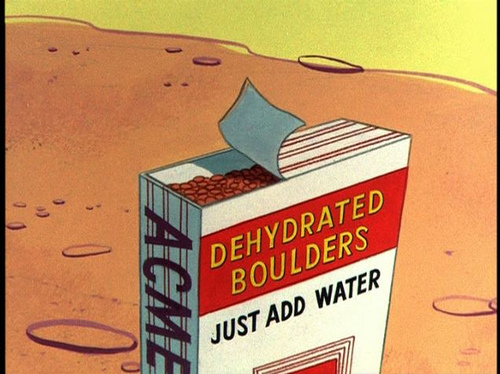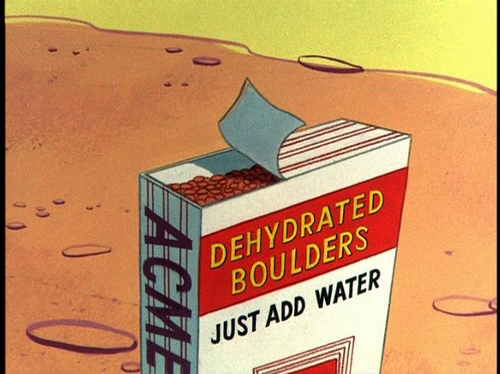Send your question to Umbra!
Q. Dear Umbra,
I am enthusiastic about growing my own food in my small garden and I am looking for ways to preserve my produce for use out of season.
I cook and freeze some things and have done some canning, but this year I thought I would make things easier with the tomatoes and try drying them.
Looking into purchasing a dehydrator (the weather here in the Midwest doesn’t lend itself to sun drying) the only ones I have found so far are made of plastic. This doesn’t sound very healthy or helpful to me. What would you recommend?
Many thanks,
Judith W.
Springfield, Ill.
A. Dearest Judith,
 One big virtual scoop of compost to you (the garden equivalent of a hearty pat on the back, methinks) for growing your own food in any quantity and one more for making the most of your crops by preserving some of the bounty for later use.
One big virtual scoop of compost to you (the garden equivalent of a hearty pat on the back, methinks) for growing your own food in any quantity and one more for making the most of your crops by preserving some of the bounty for later use.
I’m personally a huge fan of canning. It makes me feel all Little House on the Prairie. But since you’re up for alternate methods of preservation, here’s my two cents. I get that sun drying may not be the best option in Springfield, Ill., but don’t rule out the power of the sun just yet. I found a pretty easy DIY solar food dehydrator how-to on ecobites.com, which only requires a couple of boxes, a pane of clear glass, some black paint, and cloth for a screen. It would save you buying an electric dehydrator and it would save on energy costs too. I’d also recommend Dry It—You’ll Like It, a great little guide to drying fruits, veggies, meat, and fish at home without an elaborate dehydrator set-up. (Plus, the title makes me giggle every time I see it.)
That said, if you’d rather go the electric route, I wouldn’t worry too much about the leaching problem. For preserving fruits and veggies, dehydrators are generally set around 115 degrees, well below the temperature at which some plastics leach potentially harmful chemicals like BPA, so there’s not a huge risk there, especially with reputable models—I’ve heard good things about Excalibur. (Here’s its spiel on the safety of its plastic models). Stainless steel dehydrators are another option, though they’re quite a bit pricier. Whichever one you choose, be a conscientious consumer and ask questions: What are the food-contact surfaces made of? Does the dehydrator contain BPA? Is there an adjustable temperature option?
And if all else fails, stuff yourself silly with fresh tomatoes and can the rest.
Dryly,
Umbra
Q. Dear Umbra,
I pay a hefty premium for cage-free eggs, about $3.69 per dozen. I have become very skeptical about “green” claims by agribusiness. Exactly what do they mean by “cage-free”? I can’t believe Land O’Lakes has employees running around the chicken yard gathering eggs. Thank you.
Judith S.
Silver Spring, Md.
Q. Dear Umbra,
So I’m hearing a lot of companies boast about their “free-range chicken,” but someone told me it’s not necessarily good for you. Which is it? Thank you.
Virgil T.
Miami
A. Dearest Judith and Virgil,
I would like to be able to assure you that “cage free” and “free range” chickens are frolicking around on an open plain, but alas the terms mean very little. But there’s an unless, so stick with me here.
“Cage free” means only that the hens are not housed in cages. We all know that the mere absence of cages does not equal free and happy chickens. Cage-free chickens may never even go outside.
“Free range,” on the other hand, only applies to chickens that are going to be eaten. So “free-range” eggs, unless you personally know the producer, are probably a scam. The U.S. Department of Agriculture does have regulations around the term “free range” when it’s applied to chickens that are raised for meat. As you can see on the USDA’s Food Safety and Inspection Service website, “producers must demonstrate to the agency that the poultry has been allowed access to the outside” in order to use the free-range label. The USDA says producers must provide data and evidence showing that their chickens have true access, not just an open door for 45 minutes a week or something. But the agency doesn’t conduct regular field inspections. Not exactly the chickens running wild that any of us were picturing.
So what to do if you still want to eat chicken and eggs? Buy local, know your purveyor, and ask lots of questions. If they’re not able to give you the answers you want, then mosey along. Remember that buying locally farmed chickens and eggs will also cut down on transport emissions—a double bonus. So scour your neighborhood for local farms selling pastured poultry and eggs, or forgo them altogether.
Cluckily,
Umbra
Q. Dear Umbra,
Last week, one of my students gave me great praise by lauding me as “the greenest person” she knew. Then she told me how she bought a Kindle and wasn’t buying any more books.
I couldn’t help but wonder if, in fact, using a Kindle or some similar device (iPad anyone?) is more environmentally wise or not? Surely, it takes a lot of energy to create, power, and dispose of such a device?
Inquiring professors want to know! Thanks!
Peter C.
Macomb, Ill.
A. Dearest Peter,
Aw, students say the darndest things. (But is she currently failing your class?) You may, in fact, be the greenest person she knows. Or perhaps you’ve been ill recently.
Regardless, as I’ve noted before, don’t beat yourself up if you really want to buy an e-reader. However, the New York Times recently ran a terrific op-chart (love a good op-chart) on the eco-impact of books vs. e-readers like the Kindle and iPad. Books came out ahead of e-readers in terms of materials and manufacture, with e-readers edging out books in terms of transportation. So how many books would you have to read on your e-reader to break even? According to the chart, “with respect to fossil fuels, water use and mineral consumption, the impact of one e-reader payback equals roughly 40 to 50 books. When it comes to global warming, though, it’s 100 books; with human health consequences, it’s somewhere in between.” Perhaps to the chagrin of publishers, authors, and e-reader manufacturers everywhere, I’d have to concur with the NYT chart that the most eco option is to take a walk to your local library.
However, it does provide me with a keen opportunity to point out that you could amble down to said library (or press a bunch of buttons on your e-reader) to get the next Ask Umbra’s Book club selection, Diet for a Hot Planet by Anna Lappé. Our discussion kicks off May 11, so hop to!
Dog-earedly,
Umbra



